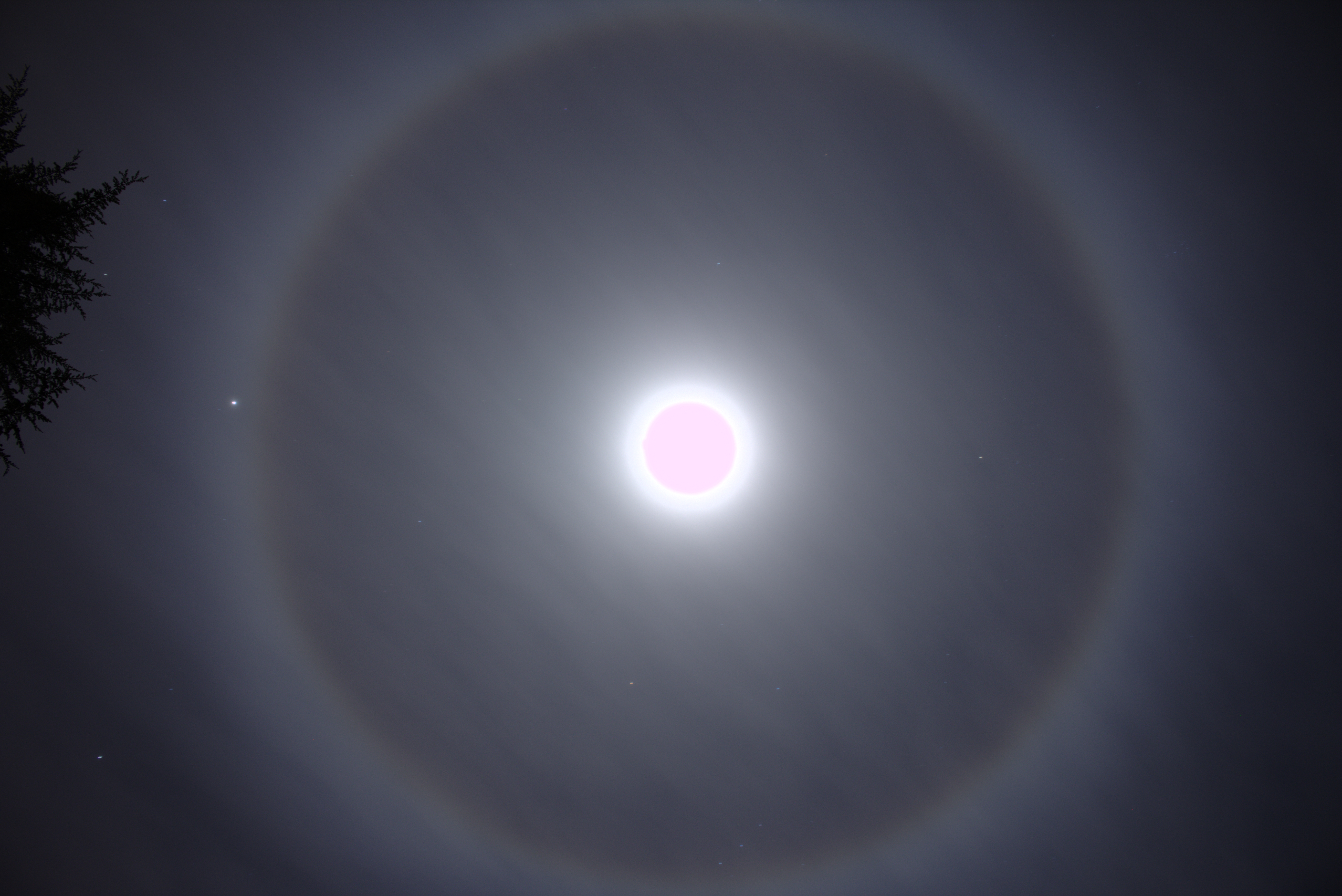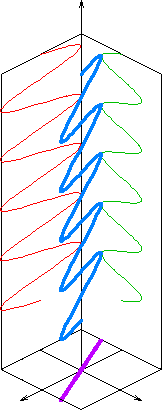|
Goos–Hänchen Effect
The Goos–Hänchen effect (named after Hermann Fritz Gustav Goos (1883 – 1968) and Hilda Hänchen (1919 – 2013) is an optical phenomenon Optical phenomena are any observable events that result from the interaction of light and matter. All optical phenomena coincide with quantum phenomena. Common optical phenomena are often due to the interaction of light from the sun or moon wit ... in which linearly polarized light undergoes a small lateral shift when totally internally reflected. The shift is perpendicular to the direction of propagation in the plane containing the incident and reflected beams. This effect is the linear polarization analog of the Imbert–Fedorov effect. This effect occurs because the reflections of a finite sized beam will interfere along a line transverse to the average propagation direction. As shown in the figure, the superposition of two plane waves with slightly different angles of incidence but with the same frequency or wavelength i ... [...More Info...] [...Related Items...] OR: [Wikipedia] [Google] [Baidu] |
Fritz Goos
Hermann Fritz Gustav Goos (11 January 1883 – 18 May 1968) was a German physicist and astronomer. Life and work Goos attended the '' Johanneum'' '' Gymnasium'' in Hamburg, from where he graduated with a high school diploma in March 1902. Until April 1903 he then worked in the machine factory ''Wimmel & Landgraf'' in Hamburg. In October 1903 he began to study mathematics and science at the ''Königlichen Technischen Hochschule'' (Royal Institute of Technology, now Technical University of Berlin) in Berlin. In March 1905 he joined the University of Bonn in the summer semester to study astronomy and mathematics. In the following winter semester, he continued his studies in Berlin, but in April 1906 went back to Bonn, where he earned a doctorate degree in astronomy in 1908. After graduating, he became an assistant at Bonn Observatory, and in 1909 he became an assistant at the Hamburg Observatory. From 1911 he worked at the Physical State Institute (founded in 1885 as the Physica ... [...More Info...] [...Related Items...] OR: [Wikipedia] [Google] [Baidu] |
Hilda Hänchen
Hilda Hänchen (later Hilda Lindberg or Hilda Lindberg-Hänchen, 1 September 1919 - 19 October 2013) was a German physicist. Life and work Hilda Hänchen received her doctorate in 1943 from the University of Hamburg under the supervision of Fritz Goos, with a dissertation titled ''Über das Eindringen des totalreflektierten Lichtes in das dünnere Medium'' ("On the penetration of totally reflected light into the rarer medium"). During World War II she worked as a "managing" research assistant at the State Physics Institute in Hamburg (to allow male academics to return after military service, women could be employed as managing assistants only). She concurrently worked at the Physical-Chemical Research Institute in Kiel on war research contracts and was listed in the register of sponsorships of the ''Reichsforschungsrat'' ("Reich Research Council"). From 1949 to 1951 she was a referee for the chemistry journal ''Chemisches Zentralblatt''. Around 1975 she was the chairman of the ... [...More Info...] [...Related Items...] OR: [Wikipedia] [Google] [Baidu] |
Optical Phenomenon
Optical phenomena are any observable events that result from the interaction of light and matter. All optical phenomena coincide with quantum phenomena. Common optical phenomena are often due to the interaction of light from the sun or moon with the atmosphere, clouds, water, dust, and other particulates. One common example is the rainbow, when light from the sun is reflected and refracted by water droplets. Some phenomena, such as the green ray, are so rare they are sometimes thought to be mythical. Others, such as Fata Morganas, are commonplace in favored locations. Other phenomena are simply interesting aspects of optics, or optical effects. For instance, the colors generated by a prism are often shown in classrooms. List Optical phenomena include those arising from the optical properties of the atmosphere; the rest of nature (other phenomena); of objects, whether natural or human-made (optical effects); and of our eyes (Entoptic phenomena). Also listed here are unexpla ... [...More Info...] [...Related Items...] OR: [Wikipedia] [Google] [Baidu] |
Linear Polarization
In electrodynamics, linear polarization or plane polarization of electromagnetic radiation is a confinement of the electric field vector or magnetic field vector to a given plane along the direction of propagation. The term ''linear polarization'' (French: ''polarisation rectiligne'') was coined by Augustin-Jean Fresnel in 1822.A. Fresnel, "Mémoire sur la double réfraction que les rayons lumineux éprouvent en traversant les aiguilles de cristal de roche suivant les directions parallèles à l'axe", read 9 December 1822; printed in H. de Senarmont, E. Verdet, and L. Fresnel (eds.), ''Oeuvres complètes d'Augustin Fresnel'', vol. 1 (1866), pp.731–51; translated as "Memoir on the double refraction that light rays undergo in traversing the needles of quartz in the directions parallel to the axis", , 2021 (open access); §9. See ''polarization'' and '' plane of polarization'' for more information. The orientation of a linearly polarized electroma ... [...More Info...] [...Related Items...] OR: [Wikipedia] [Google] [Baidu] |
Total Internal Reflection
Total internal reflection (TIR) is the optical phenomenon in which waves arriving at the interface (boundary) from one medium to another (e.g., from water to air) are not refracted into the second ("external") medium, but completely reflected back into the first ("internal") medium. It occurs when the second medium has a higher wave speed (i.e., lower refractive index) than the first, and the waves are incident at a sufficiently oblique angle on the interface. For example, the water-to-air surface in a typical fish tank, when viewed obliquely from below, reflects the underwater scene like a mirror with no loss of brightness (Fig.1). TIR occurs not only with electromagnetic waves such as light and microwaves, but also with other types of waves, including sound and water waves. If the waves are capable of forming a narrow beam (Fig.2), the reflection tends to be described in terms of " rays" rather than waves; in a medium whose properties are independent of direction, such as ... [...More Info...] [...Related Items...] OR: [Wikipedia] [Google] [Baidu] |
Imbert–Fedorov Effect
The Imbert–Fiodaraŭ effect (named after Fiodar Ivanavič Fiodaraŭ (1911 – 1994) and Christian Imbert (1937 – 1998)http://e-ico.org/node/81 is an optical phenomenon in which a beam of circularly or elliptically polarized light undergoes a small sideways shift, when refracted or totally internally reflected. The sideways shift is perpendicular to the plane containing the incident and reflected beams. This effect is the circular polarization analog of the Goos–Hänchen effect The Goos–Hänchen effect (named after Hermann Fritz Gustav Goos (1883 – 1968) and Hilda Hänchen (1919 – 2013) is an optical phenomenon Optical phenomena are any observable events that result from the interaction of light and ma .... References * * * Optical phenomena {{optics-stub ... [...More Info...] [...Related Items...] OR: [Wikipedia] [Google] [Baidu] |
Lee Giles
Clyde Lee Giles is an American computer scientist and the David Reese Professor at the College of Information Sciences and Technology at the Pennsylvania State University. He is also Graduate Faculty Professor of Computer Science and Engineering, Courtesy Professor of Supply Chain and Information Systems, and Director of the Intelligent Systems Research Laboratory. He was Interim Associate Dean of Research. His graduate degrees are from the University of Michigan and the University of Arizona and his undergraduate degrees are from Rhodes College and the University of Tennessee. His PhD is in optical sciences with advisor Harrison H. Barrett. His academic genealogy includes two Nobel laureates (Felix Bloch and Werner Heisenberg), Arnold Sommerfeld and prominent mathematicians. Research Giles has been associated with the computer science or electrical engineering departments at Princeton University, the University of Pennsylvania, Columbia University, the University of Pisa, the Uni ... [...More Info...] [...Related Items...] OR: [Wikipedia] [Google] [Baidu] |


